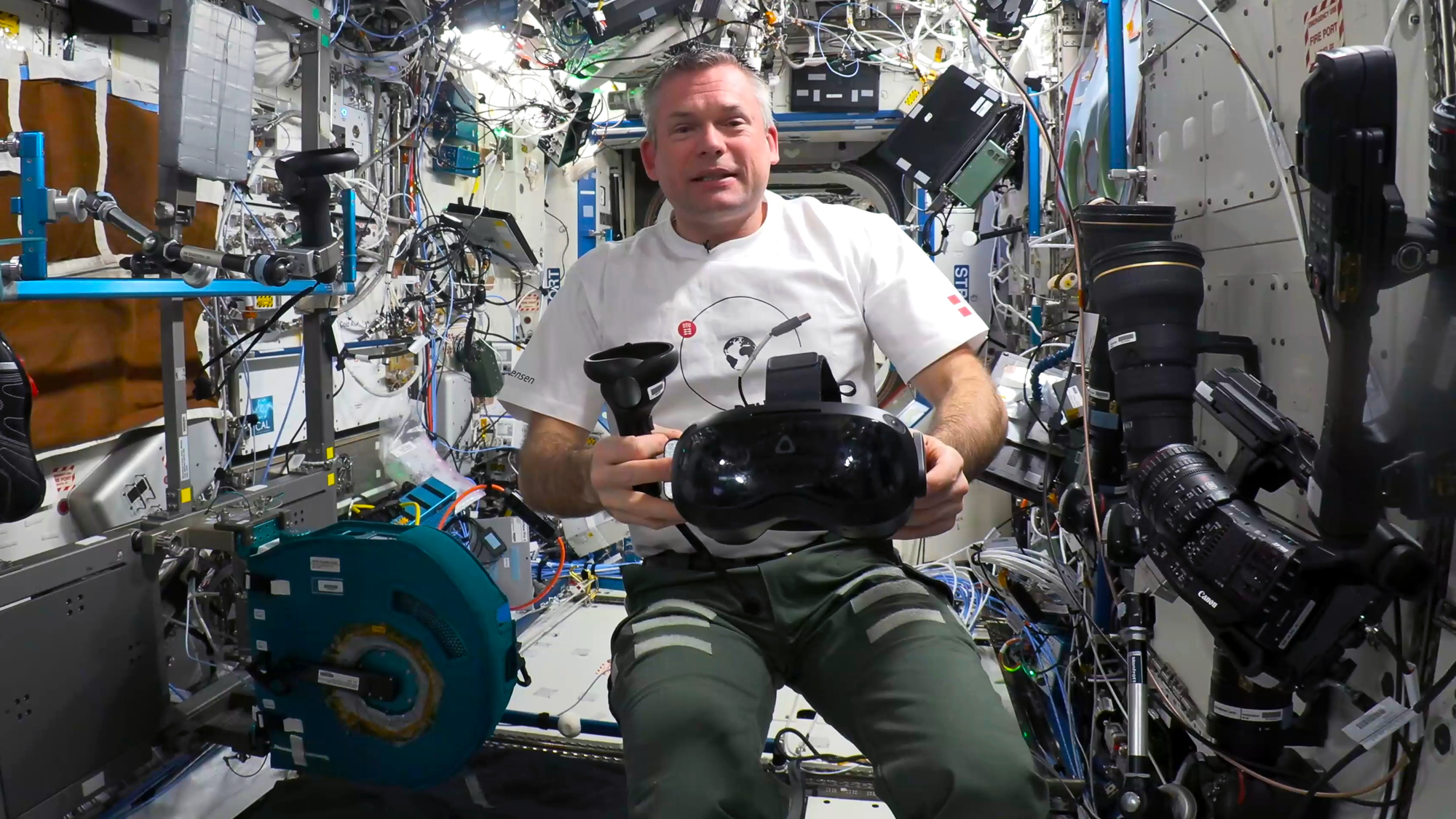The VR headset on the International Space Station is now being used for exercise as well as mental health.
In November HTC sent a Vive Focus 3 to the International Space Station on a SpaceX Cargo Dragon autonomous spacecraft launched to resupply the station as part of NASA’s Commercial Resupply Services program.
Vive Focus 3 is HTC’s $1300 business-focused standalone headset, which it released in 2021. It uses the same Snapdragon XR2 Gen 1 chipset as Quest 2 but with significantly higher resolution 2.5K displays, higher resolution than even today’s Quest 3 or Pico 4. While HTC released the newer Vive XR Elite headset last year, Focus 3 remains its primary pitch for businesses.
0:00
The headset is being used by European Space Agency astronaut Andreas Mogensen, who has been on the ISS since August and will soon return to Earth.
Part 1 of the experiment was to test how VR can help with astronaut mental health via 360-degree videos of scenes on Earth like sunsets, swimming with dolphins, and scenic views. HTC said this was done because astronauts live in a “relatively isolated and cramped” environment without the natural daylight sky humans evolved to live under.
Recently HTC enabled Part 2 of the experiment, using VR for physical health. The reduced gravity environment of space causes muscle atrophy and bone density loss, and regular exercise helps mitigate these effects. This is why astronauts typically exercise for at least two hours per day. But the environment of the ISS can be “sterile and cold”, Mogensen says, and this is where VR comes in.
The Vive Focus 3 is synced up to the smart exercise bike on the ISS via Bluetooth. As Mogensen sees a 270-degree first-person video of a cyclist on a scenic route from his home country Denmark, which plays back at the speed he’s cycling. A metadata track on the video changes the resistance setting of the exercise bike to match the surface and gradient of the track, so Mogensen feels like he’s cycling it.
Here’s what Mogensen had to say about using it:
“I miss the earth. I do. It’s a beautiful sight to sit in the Cupola and look down on Our Blue Planet, but it’s not the same. I miss the feeling of the warm sun. I miss the breeze. I miss the smell of the grass and the trees. I just miss opening a door and stepping outside – I do, yes, and the sound of nature. It’s a very unnatural laboratory we’re in.
One of the experiments I have here is a virtual reality set I use to refresh myself and help my psyche, and it’s actually wonderful. One of the things I love about this virtual reality set is the sound, hearing the sound of the birds chirping, hearing the sound of the wind blowing through the reeds and through the leaves. I love that, and it’s something I miss.”
VR Could Be Essential For Deep Space Missions
With NASA’s Artemis program aiming to establish a permanent base on the moon later this decade and eventually send humans Mars, VR could become a vital tool to help astronauts escape and relax or exercise on these long-duration missions in deep space. As well as immersive environments that simulate being back on Earth, astronauts could use headsets as personal theatres to enjoy traditional media on a much larger virtual screen than the tiny screens they could take with them.
While HTC’s experiment is only 360 videos for now, it could set a precedent for continued astronaut use of VR for both mental and physical health.





